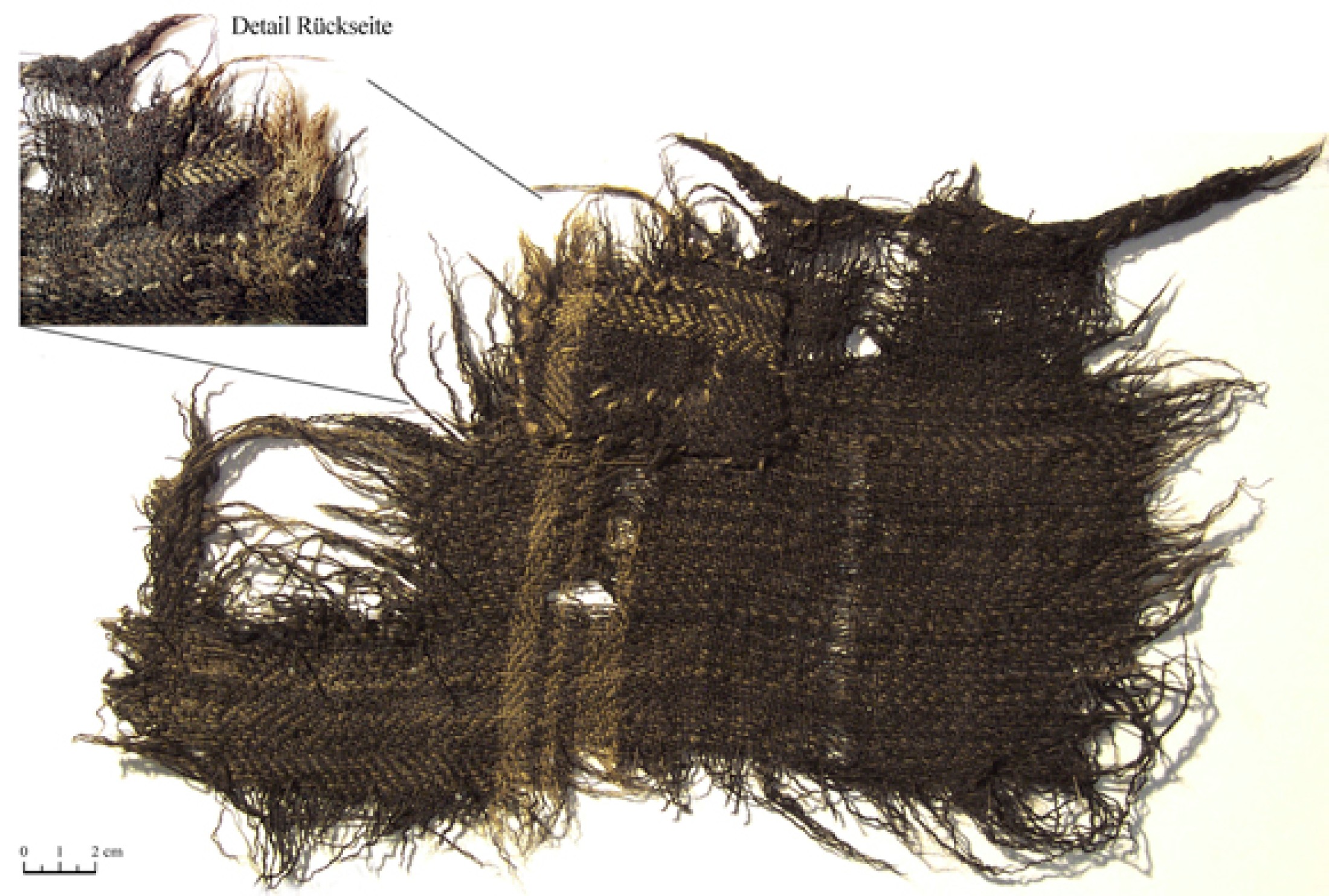Sewing techniques in Hallstatt textiles
In Europe all stitches and sewing techniques common in modern hand sewing had been developed by the Bronze Age, if not earlier. Finds made in Hallstatt show a wide variety of different stitches and seams. Damaged fabrics were often repaired with great care, indicating that textiles were highly valued.Stitching and seams
Value and appreciation of textiles
Stitching and seams
The techniques used in Hallstatt to produce fine materials were equaled in complexity by the methods used to turn these textiles into finished products. Therefore, it comes as no surprise that many textiles found contain stitching and seams. Common stiches at this time were the whip stitch and the slip stitch. Examples of running stitches, stem stitches, festoon stiches and buttonhole stitches have also been found. As well as simple seams, fell seams and decorative seams were also used. As is still the case today, seams were folded twice and then sewn; finished edges were folded only once.There are also a number of items from Hallstatt which appear to have been created using planned tailoring methods. This is shown by examples of curved seams; one item of clothing was even made out of six different pieces of cloth, two of which had been cut into a trapezium shape and then sewn together.
Value and appreciation of textiles
The amount of time and care taken when repairing damaged fabrics are proof of how appreciated and valued textiles were during this period. One piece of check fabric dating back to the Hallstatt Period was repaired so carefully that the repair itself is barely visible.Like today, textiles were used in a wide range of everyday situations during the Hallstatt Period - clothes, woolen carrysacks, blankets, linings for sword sheaths, wall decorations, etc. As such, they played an important role in how prehistoric humans expressed and portrayed themselves. The fine, valuable fabrics found in the mines of Hallstatt appear a good match for the Iron Age community in the Salzbergtal valley whose high level of prosperity is shown in the burial gifts found in the graves of deceased persons. Finds from the same period in Ancient Greece show that textiles were valuable presents given to guests and even used as offerings to the gods.
(Mautendorfer, H. - Groemer, K.)





